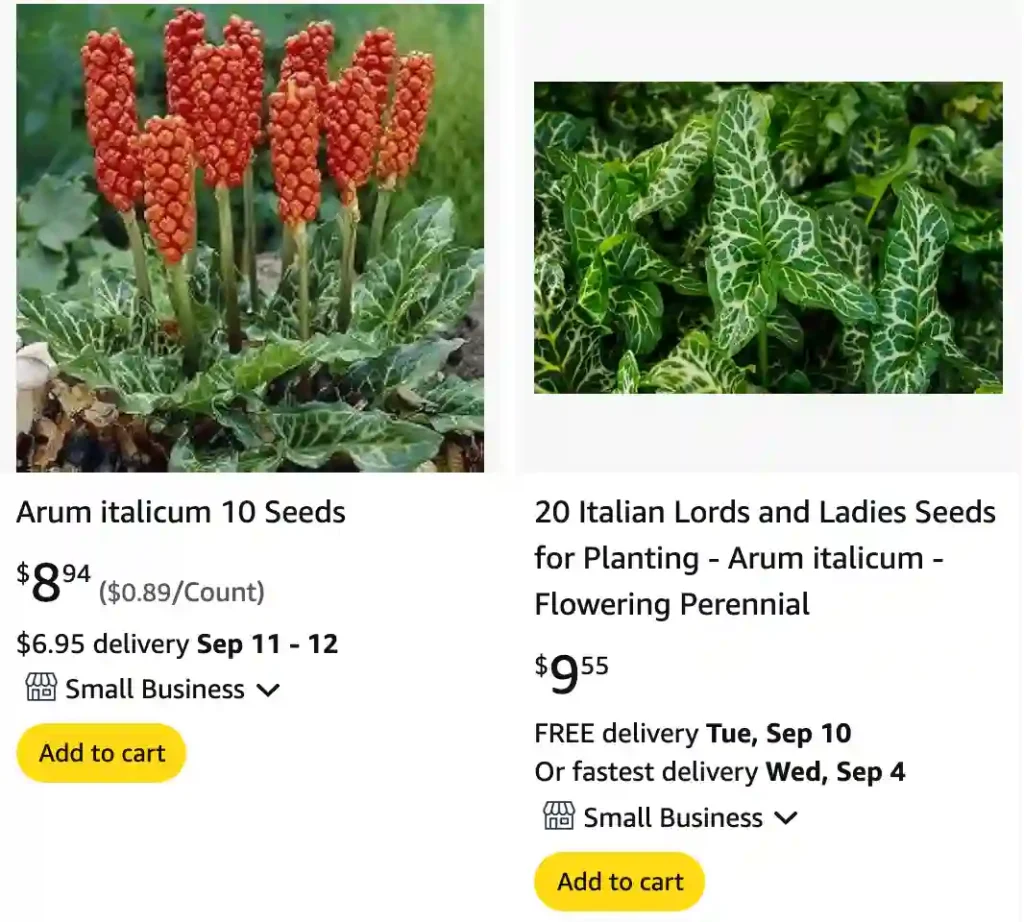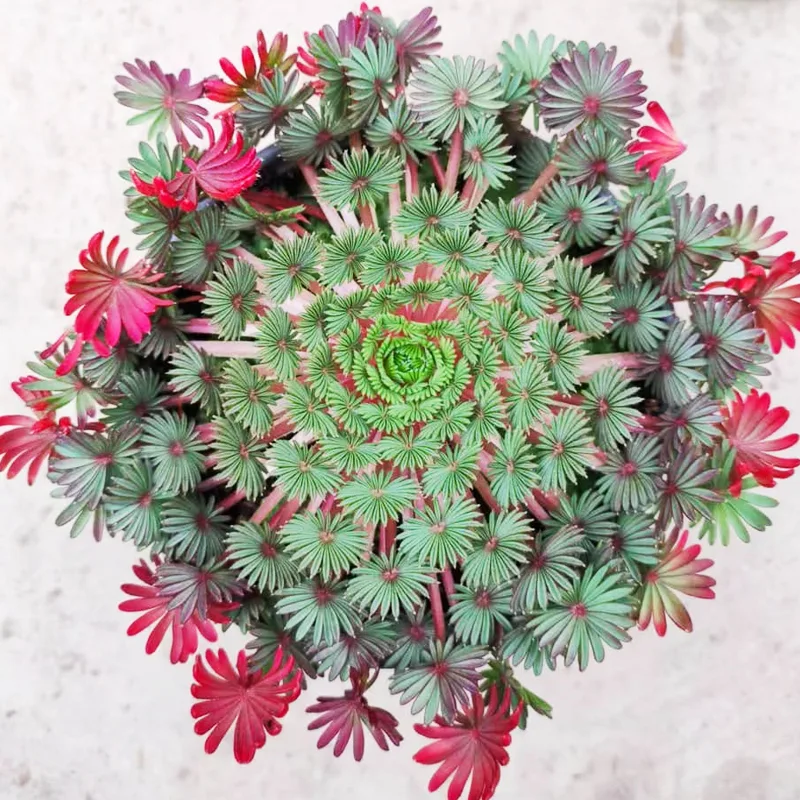
What is Arum Italicum?
Arum Italicum, commonly known as Italian Arum, is a perennial plant native to the Mediterranean region. It belongs to the Araceae family and is well-known for its distinctive foliage and unique flowering structure. The plant features arrow-shaped leaves with prominent white veins and produces a striking inflorescence—a hood-like spathe that encloses a spadix.
28 Species in Genus Arum
How to Grow Arum Italicum?
Growing Arum Italicum can be a rewarding experience due to its bold appearance and relatively easy care requirements. Here’s a straightforward guide on how to cultivate this plant:
- Location: Choose a location with partial to full shade. Arum Italicum thrives in moist, well-drained soil but can tolerate a variety of soil types.
- Planting: Plant the tubers in the fall or early spring, about 4 inches deep. Space them approximately 6-12 inches apart to allow for their spread.
- Watering: Keep the soil consistently moist but not waterlogged. During dry spells, provide additional water to maintain soil moisture.
- Fertilizing: Apply a balanced, slow-release fertilizer in the spring to support healthy growth and flowering.
How to Care for Arum Italicum?
Caring for Arum Italicum is relatively simple. Regular maintenance includes:
- Watering: Ensure the plant receives enough water, especially during dry periods. Avoid letting the soil dry out completely.
- Mulching: Apply mulch around the base of the plant to help retain moisture and suppress weeds.
- Pruning: Remove any dead or damaged leaves to keep the plant looking its best and to prevent disease.
How to Propagate Arum Italicum?
Arum Italicum can be propagated through its tubers. Here’s how to do it:
- Tubers: In the fall, after the foliage has died back, carefully lift the tubers from the soil.
- Division: Separate the tubers and replant them in a new location or container. Each tuber should be replanted at a depth of 4 inches.
- Replanting: Plant the separated tubers as you would for new growth, ensuring they are spaced appropriately.
When to Plant Arum Italicum?
The best time to plant Arum Italicum is in the fall or early spring. This timing allows the plant to establish its roots before the growing season begins. Planting in the fall gives the tubers time to settle in and start sprouting as soon as conditions are favorable in the spring.
When Do Arum Italicum Fruit Grow?
Arum Italicum produces its fruit after flowering, typically in late summer to early fall. The fruit is a cluster of red berries that develop from the flower’s spadix. The berries are visually striking but should be handled with care, as they are toxic.
Can Arum Italicum Be an Indoor Plant?
Yes, Arum Italicum can be grown indoors, though it’s not as common. If you choose to grow it inside, ensure it gets enough light—ideally from a south-facing window or under grow lights. Maintain high humidity and ensure the plant is in well-draining soil.
Is Arum Italicum Invasive?
Arum Italicum can be invasive, particularly in temperate climates. It has a tendency to spread rapidly through its tubers and seeds, which can outcompete native plants. If you’re planting it in a garden, be mindful of its spreading nature and consider using barriers or containers to manage its growth.
Is Arum Italicum Poisonous?
Yes, Arum Italicum is toxic. All parts of the plant, including the leaves, flowers, and berries, contain calcium oxalate crystals, which can cause irritation if ingested. Symptoms of poisoning may include mouth and throat irritation, swelling, and difficulty swallowing.
Is Arum Italicum Poisonous to Dogs?
Yes, Arum Italicum is poisonous to dogs. If a dog ingests any part of the plant, it can lead to gastrointestinal distress and other symptoms like drooling and vomiting. Keep this plant out of reach of pets to avoid accidental ingestion.
Is Arum Italicum Poisonous to Humans?
Yes, Arum Italicum is also poisonous to humans. Ingesting parts of the plant can cause severe irritation to the mouth and throat, and in some cases, may lead to more serious health issues. Always handle the plant with care and keep it away from children.
How to Get Rid of Arum Italicum?
If you need to remove Arum Italicum from your garden, follow these steps:
- Dig Up Tubers: Carefully dig up the tubers, making sure to remove all of them to prevent regrowth.
- Dispose Properly: Dispose of the plant material in a way that prevents it from spreading or composting.
- Monitor: Keep an eye on the area for any signs of regrowth and take action as needed.
What to Plant with Arum Italicum?
When choosing companion plants for Arum Italicum, consider plants that thrive in similar conditions. Shade-loving plants such as hostas, ferns, or shade-tolerant perennials can complement the Italian Arum and create a lush, diverse garden.
In summary, Arum Italicum is a fascinating plant with specific care requirements and potential issues. By understanding its needs and characteristics, you can successfully grow and manage this distinctive species in your garden.
If i die, water my plants!



